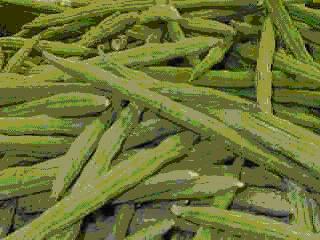Contribute
| California Lawyer Lookup: A Guide To Accessing Legal Expertise |
Usha Palaniswamy Ph.D., M.Ed.
07/12/2004
Finding a qualified lawyer in California can be a daunting task, especially given the state’s vast population and diverse legal landscape. To address this challenge, the California Lawyer Lookup tool provides an essential service for individuals and businesses seeking professional legal assistance. This article explores what the California Lawyer Lookup is, how it works, its benefits, and tips for effectively using the platform to find the right attorney. The California Lawyer Lookup is an online database maintained by the State Bar of California, designed to help the public locate licensed attorneys within the state. This comprehensive tool allows users to verify an attorney’s credentials, including their license status, areas of practice, and any disciplinary actions. It is an invaluable resource for ensuring that clients work with reputable legal professionals. Access the Website Search by Name or Bar Number Filter Results Review the Profile Contact the Lawyer Transparency and Trust Consumer Protection Accessibility Tailored Searches While the tool is comprehensive, it has some limitations: The California Lawyer Lookup is a powerful resource for anyone seeking reliable legal assistance in California. By offering transparency, accessibility, and detailed attorney profiles, the tool simplifies the process of finding qualified legal representation. However, users should complement their search with consultations and additional research to ensure they choose the best lawyer for their needs. With the right approach, the California Lawyer Lookup can be the first step toward resolving legal issues effectively and confidently. This guide highlights the importance of the California Lawyer Lookup, making it easier for individuals to navigate the complexities of California’s legal system.California Lawyer Lookup: A Guide to Accessing Legal Expertise
Introduction
What is California Lawyer Lookup?
Key Features of the California Lawyer Lookup
How to Use the California Lawyer Lookup
Visit the official website of the State Bar of California and navigate to the "Find a Lawyer" or "Attorney Search" section.
Enter the attorney’s full name or bar number to retrieve specific results.
Use filters to narrow down searches based on location, license status, or specialization.
Examine the attorney’s profile to verify their credentials, areas of expertise, and disciplinary history.
Reach out directly to the attorney using the contact information provided in their profile.
Benefits of the California Lawyer Lookup
By providing verifiable information about attorneys, the lookup tool promotes trust and accountability within the legal profession.
The tool empowers clients to make informed decisions, reducing the risk of hiring unqualified or unethical practitioners.
The online platform is free to use and available to anyone with internet access, ensuring accessibility across the state.
With filters and detailed profiles, users can find lawyers whose expertise aligns with their specific legal needs.
Tips for Using the Tool Effectively
Limitations of the California Lawyer Lookup
Conclusion
Cultivation and Traditional Uses
The drumstick tree is widely cultivated in tropical Africa, tropical America, Sri Lanka, India, Mexico, Malaysia and the Philippines. The drumstick tree can be propagated using seeds or cuttings. Seeds may be sown directly in the field or in seedbeds and the seedlings transplanted to the field after 2 to 3 months. Mature stem cuttings 3 to 5 ft (1 - 1.5 m) long can also be used for planting. The tree grows rapidly, producing the first fruits within 6-12 months of planting, depending on the cultivar. The drumstick leaves and pods are used as vegetables, aphrodisiac, food and medicine in Asia (Ramachandran et al., 1980). The flowers are consumed either mixed and cooked with other foods or fried in batter. Tender leaves are used to flavor ghee and to enhance the shelf-life of ghee. Traditionally the drumstick seeds have been used to purify domestic household water in rural areas in Sudan (Jahn, 1981, Jahn et al., 1986). Women collecting water would tie the ground seeds and suspend in the turbid water overnight.
The oil extracted from the seeds (ben oil) was used for culinary purposes, a practice that has now been long discontinued. Almost all parts of the tree have been utilized in Indian Ayurvedic traditional medicine and other folk remedies. According to Hartwell (1967-1971), the drumstick flowers, leaves, seeds and roots are used for tumors. Roots are bitter, act as a tonic to the body and lungs, and are expectorant, diuretic and stimulant in paralytic afflictions, epilepsy and hysteria. The juice prepared from root is applied externally to heal irritation of skin. The leaves have purgative properties and are applied as poultice to sores, rubbed on the temples for headaches and used for piles. The bark, leaves and roots of the drumstick tree are used as a digestive aid.
Botany
Drumstick tree is a perennial, evergreen tree that grows up to 20 ft (6.1 m) tall, with a straight trunk with corky, whitish bark. It grows well in hot, semi-arid and humid regions and in well-drained sandy or loamy soils. The tree has tuberous taproot and brittle stem is with corky bark. The leaves are pale green, compound, tripinnate, 30-60 cm (11.8 to 23.6 in) in length, with many small leaflets. The lateral leaflets are elliptic in shape while the terminal one is obovate and slightly larger than the lateral ones. The fruit pods are pendulous, green turning greenish brown, triangular and split lengthwise into 3 parts when dry. The pods are 1 to 4 ft (30-120 cm) long and 1.8 cm (0.7 in) wide and tapering at both ends. The pods contain about 10 to 20 seeds embedded in the fleshy pith. The seeds are dark brown and the kernel is surrounded by a lightly wooded shell with three papery wings.
Current Use and Health Value
Drumstick leaves are good source of protein (Freiberger et al., 1998). The leaves, flowers and pods are used as significant sources of vitamins A, B and C, riboflavin, nicotinic acid, folic acid, pyridoxine, ascorbic acid, beta-carotene, calcium, iron, and alpha-tocopherol (Dahot, 1988). Fresh tender leaflets are stripped and used as a leafy vegetable and a potherb that is cooked either alone or with lentils. The young pods, also known as "drumsticks" or "Moringai" by Indian communities, are cooked as vegetable. The pods are sold fresh and/or canned in many Asian grocery stores and markets. The green peas and surrounding white material can be removed from larger pods and cooked in many ways. The pods are considered good sources of the essential amino acids. A compound found in the flowers and roots of the moringa tree, pterygospermin, has powerful antibiotic and fungicical effects (Das et al., 1957). More recently the ben oil has also been shown to be particularly effective in the manufacture of soap producing a stable lather with high washing efficiency suitable for some African countries.
The wood provides a pulp that is considered suitable for newsprint, wrapping, printing and writing papers, and for viscose rayon grade pulp for textiles and cellophane (Guha and Negi, 1965). The root bark contains two alkaloids: moringine and moringinine. Moringinine acts as cardiac stimulant, produces rise of blood-pressure, acts on sympathetic nerve-endings as well as smooth muscles all over the body, and depresses the sympathetic motor fibers of vessels in large doses only. The seed oil is used in arts and for lubricating watches and other delicate machinery, and useful in the manufacture of perfumes and hairdressings. The pressed cake obtained after oil extraction may be used as a fertilizer. The industrial uses of the drumstick tree include the use of its wood in paper and textile industries, bark in the tanning industry, and the seeds in water purification (Bhattacharya et al., 1982, Mayer & Stelz, 1993, Palada, 1996; Tauscher, 1994).
Aqueous leaf extracts are reported to regulate thyroid hormone and can be used to treat hyperthyroidism (Tahiliani & Kar, 2000). Leaf extracts are also used to treat ulcer (Pal et al., 1995). Reportedly, drumstick leaves and pods also have a positive effect in reducing blood cholesterol (Ghasi et al., 2000), and anti-tumor promoting activity (Guevara et al., 1999). Furthermore, it is an important source of the glucosinolate precursors of the isothiocyanate group of chemopreventives (Daxenbichler et al., 1991) that can inhibit carcinogenesis. Drumstick is also being studied for its anti-inflammatory, antimicrobial, diuretic (Caceres et al., 1991, Caceres et al., 1992, Udupa et al., 1994), antibiotic (Eilert et al., 1981), hypotensive (Faizi et al., 1998), and antimicrobial(Spiliotis et al., 1998)properties.
References
Bhattacharya SB, Das AK, Banerji N. 1982. Chemical investigations on the gum exudates from Sonja (Moringa oleifera). Carbohydrate Res 102:253-262.
Caceres A, Cabrera O, Morales O, Mollinedo P, Mendia P. 1991. Pharmacological properties of Moringa oleifera. 1: Preliminary screening for antimicrobial activity. J Ethnopharmacol 33(3):213-216.
Caceres A, Saravia A, Rizzo S, Zabala L, De Leon E, Nave F. 1992. Pharmacologic properties of Moringa oleifera. 2: Screening for antispasmodic, antiinflammatory and diuretic activity. J Ethnopharmacol 36(3):233-237.
Dahot MU. 1988. Vitamin contents of the flowers and seeds of Moringa oleifera. Pak J Biochem 21(1-2):21-24.
Das BR, Kurup PA, Rao PL, Narasimha 1957. Antibiotic principle from Moringa pterygosperma. VII. Antibacterial activity and chemical structure of compounds related to pterygospermin. Indian J Med Research 45:191-196.
Daxenbichler ME, Spencer FG, Carlson DG, Rose GB, Brinker AM, Powell RG. 1991. Glucosinolate composition of seeds from 297 species of wild plants. Phytochemistry 30:2623-2638.
Eilert U, Wolters B, Nahrstedt A. 1981. The antibiotic principle of seeds of Moringa oleifera and Moringa stenopetala. J Medicinal Plant Res 42:55-61.
Faizi S, Siddiqui BS, Saleem R, Aftab K, Shaheen F and Gilani AH. 1998. Hypotensive constituents from the pods of Moringa oleifera. Planta Med 64(3):225-228.
Freiberger CE, Vanderjagt DJ, Pastuszyn A, Glew RS, Mounkaila G, Millson M, Glew RH. 1998. Nutrient content of the edible leaves of seven wild plants from Niger. Plant Foods Human Nutr 53:57-69.
Ghasi S, Nwobodo E, Ofili JO. 2000. Hypocholesterolemic effects of crude extract of leaf of Moringa oleifera Lam. in high-fat diet fed wistar rats. J Ethnopharmacology 69:21-25.
Hartwell JL. 1967-1971. Plants used against cancer. A survey. Lloydia 30-34.
Guevara AP, Vargas C, Sakurai H, Fujiwara Y, Hashimoto K, Maoka T, Kozuka M, Ito Y, Tokuda H, Nishino H. 1999. An antitumor promoter from Moringa oleifera Lam. Mutation Res 440:181-188.
Guha SRD, Negi JS. 1965. Wrapping, printing, and writing paper from Moringa pterygosperma. Indian Pulp Paper 20(6):377-379.
Jahn SAA. 1981. Traditional water purification in tropical developing countries: existing methods and potential applications. Manual No.117, Pub. GTZ, Eschborn, Germany.
Jahn SAA, Musnad HA, Burgstaller H. 1986. The tree that purifies water: Cultivating multipurpose Moringaceae in the Sudan. Unasylva 38:23-28.
Mayer F, Stelz E. 1993. Moringa stenopetala provides food and low-cost water purification. Agroforestry today 5:16-18.
Palada MC. 1996. Moringa (Moringa oleifera Lam.): a versatile tree crop with horticultural potential in the subtropical United States. HortScience 31:794-797.
Pal SK, Mukherjee PK, Saha BP. 1995. Studies on the antiulcer activity of Moringa oleifera leaf extract on gastric ulcer models in rats. Phytotherapy Res 9:463-465.
Ramachandran C, Peter K V, Gopalakrishnan P K. 1980. Drumstick (Moringa oleifera): a multipurpose Indian vegetable. Econ Bot 34(3): 276-283.
Spiliotis V, Lalas S, Gergis V, Dourtoglou V. 1998. Comparison of antimicrobial activity of seeds of different Moringa oleifera varieties. Pharm Pharmacol Lett 8(1):39-40.
Tahiliani P, Kar A. 2000. Role of Moringa oleifera leaf extract in the regulation of thyroid hormone status in adult male and female rats. Pharmacol Res 41(3): 319-323.
Tauscher B. 1994. Water treatment by flocculant compounds of higher plants. Plant Res Development 40:56-70.
Udupa SL, Udupa AL, Kulkarni DR. 1994. Studies on the anti-inflammatory and wound healing properties of Moringa oleifera and Aegle marmelos. Fitoterapia 65(2):119-123.
You may also access this article through our web-site http://www.lokvani.com/

